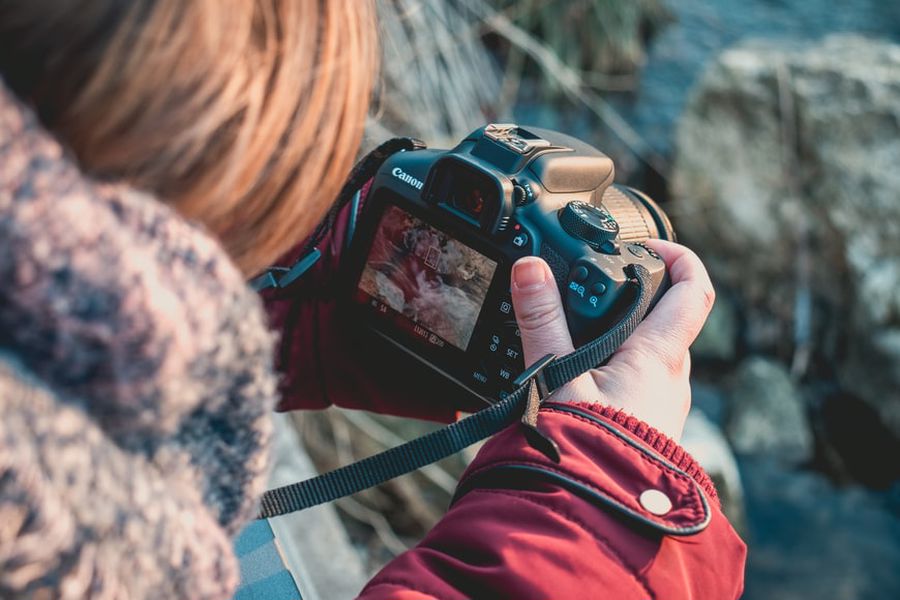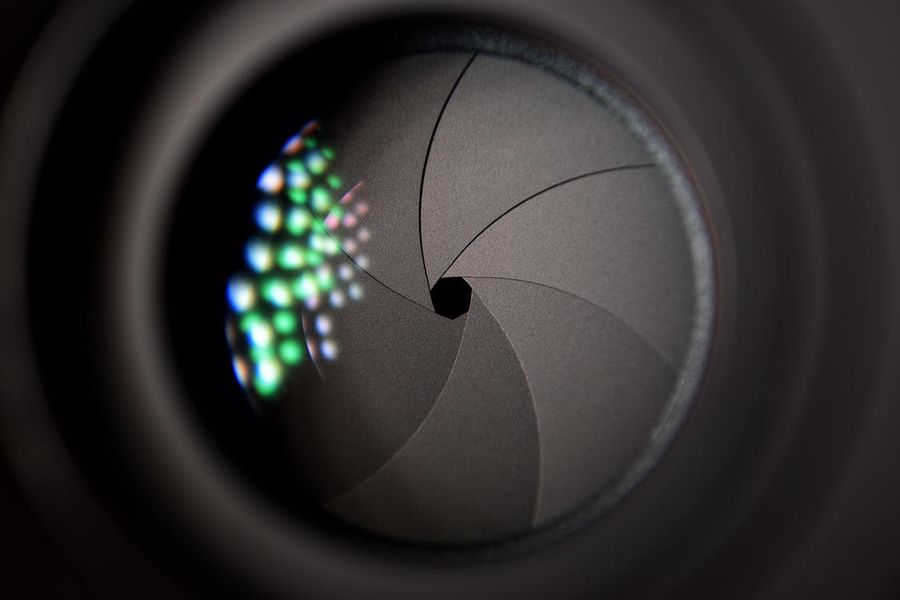
As an Amazon Associate we earn from qualifying purchases.
In
So what is depth of field? And how can you apply it in your own work?
Quick Navigation
Depth of field refers to the distance between the closest objects in the picture vs the and farthest objects, or the area that is sharp and in focus while the rest of the areas are blurred out. You can change the area that you want to focus on and adjust the depth of field depending on your subject.
The depth of field is based on the circle of confusion that involves physics in

Depth of field is one of the concepts in
Aperture is the main factor in the creation of the depth of field. The sharpness in an area depends on how you adjust your aperture. This setting is the first thing that most photographers think of when they need to adjust their camera's depth of field.
Aperture is the small opening in your camera's lens that allows enough light to pass through the sensor. It serves as a pupil for your camera's lens. The aperture dilates to let light in, and it contracts in order to restrict some light when it is too bright.
Massive apertures, which correlate to small f-stop numbers, usually produce a shallow depth of field. Meanwhile, small apertures that have massive f-stop numbers that create pictures with a massive and deep depth of field.
Aperture has numerous effects on your pictures. As the aperture size changes, it also adjusts the light that goes through the lens’s sensor. That means that the brightness of your images can adjust too.
A large aperture, or a wide opening, will pass enough light in, and this results in brighter pictures. A small aperture does the exact opposite as it makes the pictures darker.
In a dark environment, especially at night and indoors, you will need to select an aperture that is large so it can capture enough light. Think of how the pupils of the human eye dilate when there is not enough light.
Some pictures have a depth of field that is shallow and the background of the image blurry. Meanwhile, other images have a deep or large depth of field, where everything is sharp and clear.
A massive aperture often results in a massive amount of background and foreground blur. This is usually great for portrait photography or pictures of subjects where you want to separate them from the rest. There are instances wherein you can frame the subject with the subject's foreground. It will also seem blurred compared to the subject.
On the other hand, a small aperture produces a tiny blur in the background. It is great for both architecture
Another vital factor that affects the depth of field is how far your camera is from your subject. If the distance is short, the depth of field becomes smaller.
If you try to take a close-up picture of a tiny subject, yet you can't get the whole subject in focus. It can be difficult even with a very narrow aperture. The depth of field becomes deeper if you are closer to your subject.
The traditional depth-of-field formulas can be difficult to use in practice, especially for beginners. As an alternative, another calculation can be used without having to add the focal length and f-stop. That is what the aperture calculators use. The effective aperture size can be done for the same formula in certain situations.
Also, traditional depth of field formulas has equal circles of confusion for both near and far subjects. The distant objects usually need to be sharper so they can be recognizable, while closer subjects do not need to be as sharp since they are larger on film.

The lack of detail in distant subjects may be noticeable when it is too enlarged. Getting this additional sharpness in subjects that are distant usually needs focusing beyond the typical distance, sometimes at infinity.
For example, if taking pictures of buildings and cars in the foreground, it is recommended to focus your lens to infinity and to stop down in order to make the cars more noticeable.
With this method, foreground subjects can't always be sharp, but the loss of sharpness in near subjects is acceptable if distant objects are paramount.
Wide-angle lenses usually have short focal length ranges. They have a deeper depth of field compared to telephoto lenses, which are known to have long focal lengths. However, they can still be adjusted. If you take a picture and you do not change the camera-subject distance, then your wide-angle lenses will remain to have short focal lengths.
For example, if you take two sets of images, with one shot at 70mm focal length and the other 105mm focal length, and they both were taken at the same distance from the subject. You will notice that each shot with the same aperture has a different depth of field. The one with a narrower focal length has a larger depth of field.
However, you can't fully compare the two sets of pictures. The photo’s field of view is totally different. The first picture will take in more of the surroundings in the photo, and the subject will appear smaller in the frame.
Another example is if you take one photo at a 35mm focal length and you are about 2 feet away from the focus point, while you take the second photo at the same focal length yet you are 1.2m away from the subject.
If you zoom into your subject with a 70mm focal length, and you frame the picture so the top of your subject is the same size as the first photo, the depth of field in both photos will be identical. Both shots will be sharp and clear.
The difference is that the one with a narrow-angle of view has a longer focal length. A smaller part of the picture’s background can fill the whole spot. The magnification of the background can give the sense that the blur is more massive in the picture because it is shot with a longer lens.
The sensor size of your lens is also a factor. Cameras with smaller sensors are known to have a larger depth of field. However, you need to be cautious about how you make the comparison.
Lenses equipped with the same focal length must be used so that the fields of view are similar. If you shoot subjects at the same camera-subject distance, using the apertures, you will find bigger sensors can produce a shallower depth of field.
Because of this, a lot of professional portrait photographers use full-frame cameras. For example, a full-frame camera with a 120mm lens, a micro camera with a 60mm lens, and an APS-C camera equipped with an 80mm lens have all the same field of view. Each of them is set to an f/9 aperture, with a 5.0 camera-subject distance.
Full-frame has a depth of field of 1.89m, the APS-C has a depth of field of -1.91m, and the micro camera has a depth of field of 1.91m. So can you take the same images with the same depth of fields using DSLRs with different sensor sizes? The answer is yes, it is possible.
However, you need to divide the apertures first using the crop factor so you can get the same depth of field.
Using the same DSLR and lenses that were given as examples. Setting an f/1.8 aperture on the full-frame camera, an f/1.2 aperture on the APS-C camera, and the f/9 aperture on the micro camera, you will get images that have the same depth of field.
Several DSLR cameras have a preview button for its depth of field. If you press it while looking through the camera’s viewfinder, it will stop down and you will be able to view how the image will look like. This is very useful especially if you plan to print out your images, and you will have an idea of what you need to adjust before you do so.
However, when adjusting the apertures and changing it to a narrower one, the viewfinder will get darker, and it will be difficult to see the image.
Meanwhile, the live view can also be used on some camera models so you can see how the depth of field will look on an image. You can check your camera’s manual or booklet for more information. For mirrorless cameras, it’s better because what is seen on the LCD screen or viewfinder is the same as how the image will look.
First, you can do it by the lens aperture. You can also tweak the scene and sharpen it by adjusting the aperture so the lighting will change too. To single out your subject, you can do the opposite. Just set the aperture as massive as possible. In both cases, to control the depth of field, you will have to change the lens' shutter speed so that the difference won't be as obvious.
Second, you need to make some changes to the distance between your camera and your subject. In order to increase the depth of field in the image, you just have to move a bit further from the subject. In order to reduce it, you just need to move closer. Your camera is like your eye, it becomes more focused on the subject as it gets closer.
The third is changing the lens’s focal length to adjust the depth of field. If the focal length is long, the depth of field is shallow, and if the focal length is short, the depth of field is wide.

The ISO only affects the depth of field if it is adjusted. A higher ISO lets you use a smaller f/stop in any situation, while a lower ISO lets you use a larger f/stop.
A higher ISO setting also means that your camera is more sensitive to light and will often result in your camera choosing a faster shutter speed and a smaller aperture.
Increasing the depth of field means that the focal length and the image size are also increased.
In calculating the depth of field, there are four variables to consider.
-Distance between you and the subject
-The aperture of the lens
-Focal length
-Sensor Size
The variables are applied to determine the depth of field in your images. You need to combine the f-number of your camera lens, the focal length of the lens, and the subject's distance.
The formula includes a circle of confusion, which is a figure that describes how massive the point of light becomes before it is no longer sharp. The formula mentioned above allows you to calculate the depth of field from any focal length, aperture, and distance to the subject.
The sensor size is not included in the equation because it does not change and it is a fixed size, unlike the focal length, the distance, and the f-number that can be adjusted.
Although the depth of field is important in
Now that you know what is the depth of field and the factors that affect it, it is a lot easier to get the results that you are looking for in a picture.
